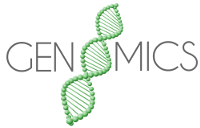Structural and functional genomics of aromatic degradation in a model yeast T. cutaneum
NSERC Genomics program.
Applicants: Paul Joyce, Justin Powlowski (Concordia).
The degradation of environmental toxins by microorganisms is an activity that has the potential to be harnessed for the destruction of chemical waste and environmental pollutants. In order to exploit this power, it is necessary to understand how microorganisms respond to the presence of these toxins, including how they break them down and how they protect themselves from their toxic effects.
These responses are ultimately controlled by turning on and off sets of genes and by the coordinated activities of the products of these genes (proteins). While information is available about the the activities of individual genes and proteins involved in these degradative processes, especially in bacteria, studies of the complete response at both the protein and gene levels are lacking. In order to better understand how microorganisms degrade toxic compounds, especially to manipulate these organisms to perform better in the degradation of toxic compounds, these whole organism studies are necessary.
At present, very little is known about how fungi respond to and degrade toxic chemicals. In this study we have chosen a model yeast, Trichosporon cutaneum , which is known to be a versatile degrader of chemicals of environmental concern. By a concerted study of the genes and proteins involved in the degradation of these compounds, we hope to better understand: the basis for this versatility; how it differs from bacteria; how these activities are controlled by the organism; and whether similar strategies are used by other fungi.
With this information in hand we can better understand the fate of these chemicals in the environment, and how we might apply these biological activities towards engineering a cleaner environment.
